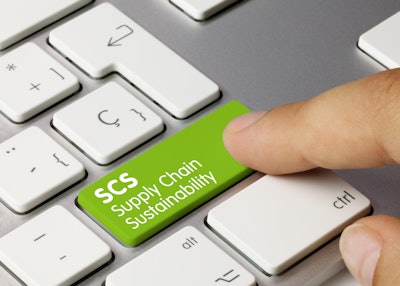
As companies increasingly prioritize ESG initiatives, such as reducing greenhouse gas (GHG) emissions and driving positive social change, procurement teams are now being measured on non-financial goals in addition to traditional financial targets. Procurement now has the potential to drive sustainable business processes and create long-term value; but digital roadblocks prevent them from fully realizing their potential.
Procurement teams need access to the right tools and data to effectively execute on non-financial performance tracking, measuring, and reporting. By embracing spend intelligence, and performance management solutions, procurement can meet the demands of stakeholders and support socially conscious and sustainable business practices that build stronger internal and external relationships, reduce risk and increase compliance.
Bridging the Gap: Procurement’s Role in ESG Reporting
Companies may find it daunting to adopt ESG strategies, struggle to initiate meaningful change, and comply with new and evolving regulations – due largely to an existing gap between their current position and desired outcome. But by bridging this gap and adopting best practices and the right tools, procurement teams can:
- Identify relevant ESG initiatives, laws, and regulations for their business (e.g., the German Supply Chain Due Diligence Act, or LkSG),
- Leverage supplier intelligence to make meaningful changes now (e.g., direct more spend with diverse suppliers),
- Track progress on due diligence reporting requirements (e.g., LkSG, Uyghur Forced Labor Prevention Act),
- Track progress on mandated remediation goals (e.g., reducing Scope 3 GHG emissions), and,
- Provide auditable and compelling reports to external stakeholders – compliance officers, governing bodies, and the general public.
The proposed U.S. Securities & Exchange Commission climate disclosure rule has created a sense of urgency for organizations that lack proper measures to track and report on Scope 3 emissions. Although these regulatory changes have yet to go into effect in the U.S., other similar laws mandate this reporting, including the EU’s Supply Chain Law and Corporate Sustainability Reporting Directive and the German Supply Chain Due Diligence Act.
In addition to heightened scrutiny, procurement faces one of the toughest market environments in decades. Various outside influences including wavering economic stability, price volatility, U.S. bank failures and geopolitical unrest are converging to create a volatile landscape for procurement teams and their businesses.
Companies must invest in procurement technology that breaks down data silos, enables real-time collaboration with internal and external stakeholders, and allows for strategic decision making to advance their sustainable ambitions and navigate market uncertainty. This requires a holistic approach to procurement that goes far beyond simplistic automation and data collection. It requires insights that offer a collective answer to businesses questioning how they’ll be able to address ESG concerns – allowing them to emerge from the tunnel of uncertainty with stronger, more sustainable practices.
From Data Silos to ESG Compliance
Data serves as the foundation for successfully reporting on ESG factors and creating a roadmap for sustainable solutions. Yet, for many companies, the greatest obstacle they face on the path towards ESG success is none other than data itself.
To confidently begin your data journey, ask these critical questions: What emissions-related information do we gather and have available? Are these existing metrics current, reliable and accurate? Are our tools and technologies able to collect and analyze this data effectively? What additional information do we need to accurately paint a picture of current ESG metrics?
If your data lives in multiple different systems and exists in different formats, it’s time to address these data challenges head on. A technology-driven approach like spend intelligence uses advanced analytics to automatically capture, categorize, and consolidate an organization’s spend data from disparate systems to create a single, comprehensive view. The resulting insights allow for procurement teams to identify and prioritize cost-saving opportunities, supplier risks and sustainability goals.
Additionally, procurement teams can use these insights to make informed decisions regarding supplier relationships, risk mitigation, and compliance measures. By collaborating with strategic suppliers that align with their company ESG initiatives, procurement teams can take further steps to comply with relevant ESG laws and regulations, such as the German Supply Chain Due Diligence Act (LkSG). Businesses can then provide auditable and compelling reports to external stakeholders, including compliance officers, governing bodies and the general public.
Smart Procurement for a Sustainable Future
To stay ahead of the curve, forward-thinking companies increasingly turn to performance management solutions that offer robust reporting capabilities. With numerous projects running simultaneously, procurement teams need complete visibility into the teams, objectives and their data to effectively monitor and track ESG initiatives. Without such insights, it can be impossible to manage and report on sustainability indicators and show progress.
Let’s say a company’s leaders tap procurement to reduce their carbon emissions by 25% over the next five years. Procurement gets to work by launching a sustainability project and collaborating with stakeholders to align on emissions-reduction efforts, including sourcing “greener” products and services, reevaluating supplier relationships, sourcing optimization and setting sustainable internal consumption rates. Procurement identifies and contracts with certifiably sustainable suppliers; purchases greener equipment, products and services; and works with business units to manage demand – all to reduce carbon emissions and enable it to hit its 25% reductions goal.
With performance management tools in place, procurement teams can consolidate project data in a central platform, which enables easy monitoring and reporting on the progress of projects and their impact on their overall carbon emissions. Procurement can then make more informed decisions for future business cycles about which suppliers to partner with, which categories to source and where to focus their efforts to maximize impact. They can also identify any potential roadblocks or inefficiencies in the project, make real-time adjustments to stay on track, measure their progress towards their ESG goals and continuously improve their performance over time.
Here’s an overview of the business impact:
- Improve decision making: With real-time access to procurement data, including process improvement and sustainability projects, procurement teams and business leaders can make quick and confident decisions to improve outcomes. They can identify potential issues early on and take corrective action to mitigate risks, allocate or reallocate resources and stay in line with enterprise-wide sustainability initiatives.
- Source more ethically and sustainably: You can’t manage what you can’t see. Informed by spend intelligence and guided by performance management solutions, procurement teams can direct more spend towards suppliers and spend categories that will help the company hit ESG goals, such as reduced GHG emissions, fair-trade, fair-wage, or rainforest-friendly -certified products and comply with related laws and regulations.
- Increase efficiency: Transparency across the procurement function allows businesses to identify inefficiencies and bottlenecks, enabling them to make necessary changes to streamline processes and reduce costs. For example, by tracking supplier performance on sustainability and social metrics, organizations can identify suppliers that may pose a risk to their ESG goals and work to find sustainable alternatives in a timely manner.
By making ESG considerations an integral part of their procurement strategies, businesses can build a more sustainable and resilient future. Procurement teams are well positioned to take their business there. By collecting and refining spend data into spend intelligence, procurement can use these insights to fuel procurement performance management. They can centralize spend data, increase operational transparency and accurately report on the progress they make. As a result, procurement teams can not only increase their companies’ compliance and reduce risk, but also make informed decisions about their supplier partnerships and supply chain practices that will advance their ESG goals and achieve their larger business objectives.


















